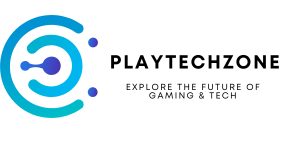The world of artificial intelligence (AI) is no stranger to rapid evolution, but the past week has been a whirlwind even by those standards. Both OpenAI and Google, titans in the AI arena, have unveiled their latest innovations and strategic roadmaps, revealing starkly different visions for the future of this transformative technology.
As an expert closely following the tech landscape, I’m particularly intrigued by the implications of these announcements. OpenAI’s unveiling of GPT-4o, a multimodal model capable of processing both text and images, signals a bold step towards more versatile and human-like AI. On the other hand, Google’s I/O conference showcased a strategy deeply rooted in integration, embedding its AI prowess across its vast ecosystem of products and services.
This article delves into the heart of this AI arms race, dissecting the core differences between OpenAI and Google’s approaches and exploring the potential impact on the future of technology.
OpenAI: A Quest for General-Purpose AI
OpenAI’s trajectory has been marked by a consistent pursuit of artificial general intelligence (AGI) – AI systems capable of performing any intellectual task a human can. GPT-4o, their latest offering, embodies this ambition with its multimodal capabilities.
Key Highlights of GPT-4o:
- Voice and Vision Integration: GPT-4o can process both text and images, enabling it to understand and respond to a wider range of prompts and instructions.
- Enhanced Conversational Abilities: OpenAI claims GPT-4o can adapt its communication style, even adopting tones like sarcasm, making interactions feel more natural and human-like.
- Real-Time Language Translation: Breaking down language barriers, GPT-4o can translate languages in real-time, facilitating seamless cross-cultural communication.
These advancements position GPT-4o as a potential game-changer in various fields. Imagine virtual assistants capable of understanding visual cues, AI-powered creative tools that respond to sketches, or educational platforms personalized to individual learning styles.
However, OpenAI’s pursuit of AGI has also attracted criticism. Concerns regarding the ethical implications of increasingly powerful AI systems, potential job displacement, and the need for robust safety measures are central to this debate.
Google: AI as the Fabric of Everyday Life
While OpenAI focuses on pushing the boundaries of AI capabilities, Google’s approach emphasizes integration and accessibility. Their I/O conference underscored this strategy, showcasing how AI is being woven into the fabric of their existing product ecosystem.
Key Takeaways from Google I/O:
- AI-Powered Enhancements Across Products: From Search and Assistant to Maps and Gmail, Google is infusing AI into virtually every aspect of its offerings, enhancing user experience and productivity.
- Focus on Practical Applications: Google’s AI advancements prioritize solving real-world problems, with applications ranging from medical diagnosis and personalized learning to climate change mitigation.
- Emphasis on Responsible AI Development: Google emphasizes its commitment to ethical AI development, focusing on fairness, transparency, and accountability in its algorithms and applications.
This strategy positions Google as a driving force in democratizing AI, making it accessible to a wider audience and integrating it seamlessly into everyday life. However, this approach also raises questions about data privacy, algorithmic bias, and the potential for over-reliance on AI-driven solutions.
Divergent Paths, Shared Challenges
Despite their contrasting approaches, both OpenAI and Google face shared challenges in navigating the complex landscape of AI development.
Ethical Considerations: As AI systems become more powerful and pervasive, ensuring their ethical development and deployment is paramount. Addressing issues like bias, fairness, and transparency is crucial to building trust and mitigating potential harm.
Regulation and Governance: The rapid pace of AI development necessitates robust regulatory frameworks to guide its responsible use. Striking a balance between fostering innovation and safeguarding societal interests is critical.
Collaboration and Open Dialogue: Addressing the challenges posed by AI requires collaboration between researchers, policymakers, industry leaders, and the public. Fostering open dialogue and sharing best practices is essential to ensure the responsible development and deployment of this transformative technology.
The Road Ahead: Navigating the Future of AI
The diverging paths taken by OpenAI and Google highlight the multifaceted nature of AI and its potential impact on society. While OpenAI’s pursuit of AGI pushes the boundaries of what’s possible, Google’s focus on integration aims to make AI an integral part of our daily lives.
As we navigate this uncharted territory, it’s crucial to approach AI development with a balanced perspective, considering both its potential benefits and risks. Open dialogue, ethical considerations, and robust governance will be paramount in harnessing the power of AI for the betterment of humanity.
Further Reading:
- The Promise and Peril of Generative AI – The New York Times
- Artificial Intelligence: What Everyone Needs to Know – MIT Press
- The Ethics of Artificial Intelligence – Stanford Encyclopedia of Philosophy
